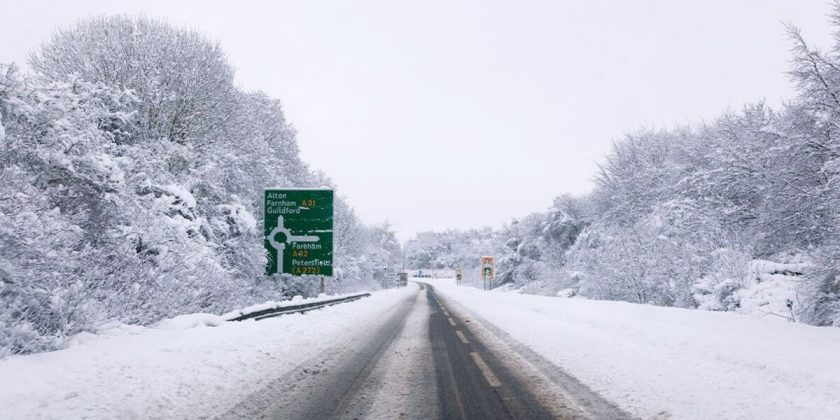Highway Code changes slammed by Steve McNamara
We use your sign-up to provide content in ways you’ve consented to and to improve our understanding of you. This may include adverts from us and 3rd parties based on our understanding. You can unsubscribe at any time. More info
Drivers have been urged to follow specific winter tips to ensure road safety in the next few months. With weather getting progressively worse, experts at Bill Plant Driving School have shared five tips all motorists should be aware of this winter.
Think about the stopping distance
When a road surface becomes slippy, it makes a vehicle unable to break as quickly as what it would be able to on a dry surface.
For this reason, drivers should leave a gap between their vehicle and the car in front up to 10 times the normal recommended braking distance.
Motorists should also ensure to give themselves at least 10 seconds to come to a complete stop.

Learn how to correct a skid on ice
If a vehicle skids on ice, the person behind the wheel can often panic, which is why it’s important to understand what to do in this situation.
Drivers should remove their foot from the accelerator as the more power they apply, the more likely their vehicle will continue to skid.
Drivers should steer the wheel in the direction of the skidding vehicle, so, if the vehicle is sliding to the left, drivers should steer to the left.
DON’T MISS
UK motorists warned of driving law changes in November [WARNING]
Petrol and diesel drivers warned of £100 daily costs with new CAZ [FINE]
Motorists warned of huge £1,000 fine for simple driving licence error [INSIGHT]
This will help bring the vehicle into a straight line and out of the skid.
Drive in higher gear in snow and ice
When driving in snow, motorists should drive in as high a gear as possible, even if they’re driving at a slower speed.
Tyres grip less efficiently in wet and cold conditions, so by driving in a higher gear, motorists will keep their vehicle’s revs low and prevent their wheels from spinning out.

 Book here
Book here
 Book here View Deal
Book here View Deal
Book your MOT with the UK’s #1 MOT tester – just click the link to book online.

Drive for the conditions, not the speed limit
Speed limits are the maximum in ideal driving conditions, meaning it’s not always safe to drive at this speed in bad weather.
On icy and wet surfaces, tyre grip is greatly reduced making braking distances much longer.
Because of this, drivers should adjust their speed based on the surrounding conditions and not try to match the speed limit.

Use the fog lights when necessary.
Fog lights are installed to make a vehicle more visible in poor visibility conditions such as fog, heavy rain or snow.
If visibility is less than 100m, drivers should put their fog lights on.
Drivers should remember to switch their fog lights off when visibility improves as this could land them with a £50 fine.
Source: Read Full Article
